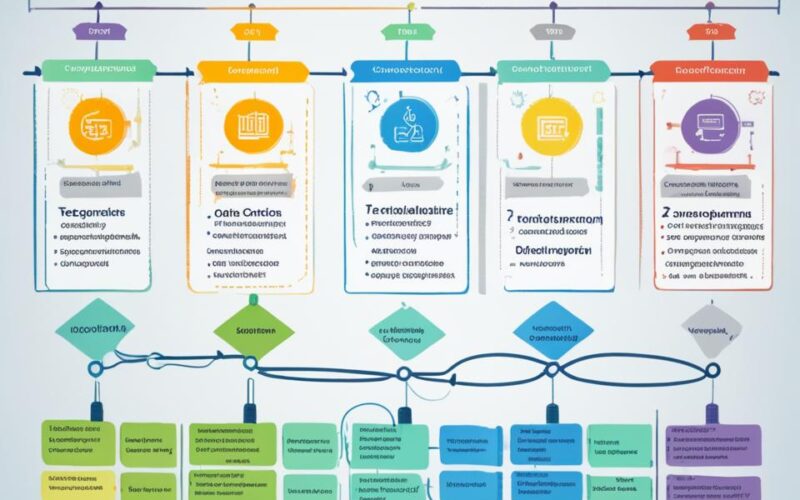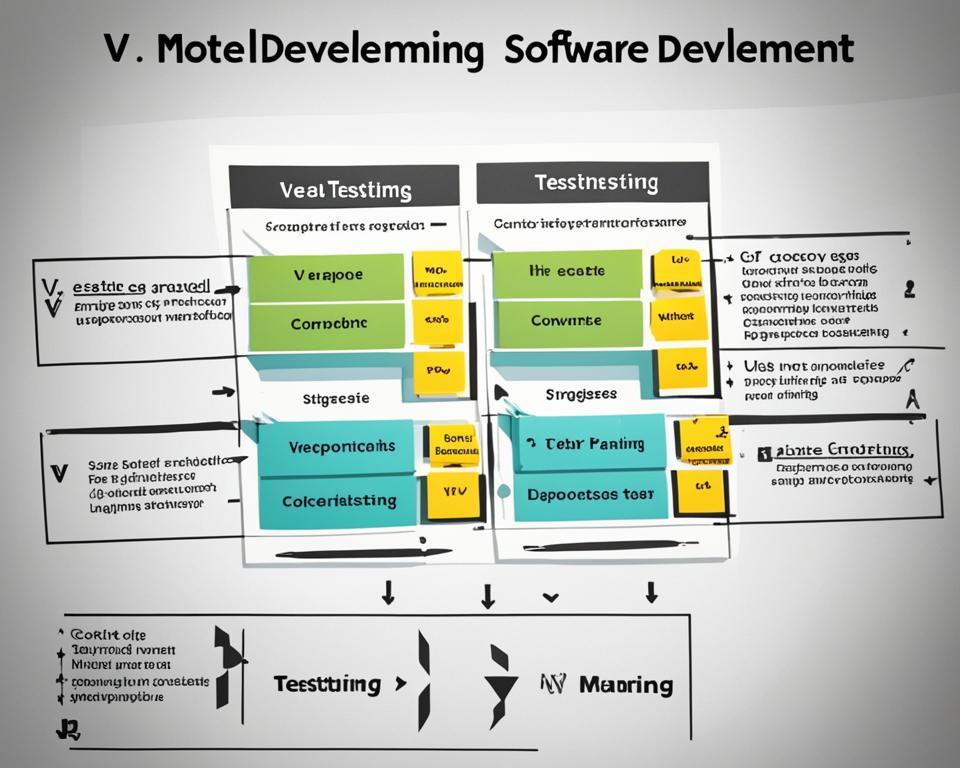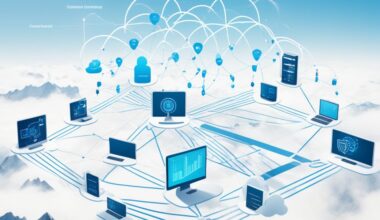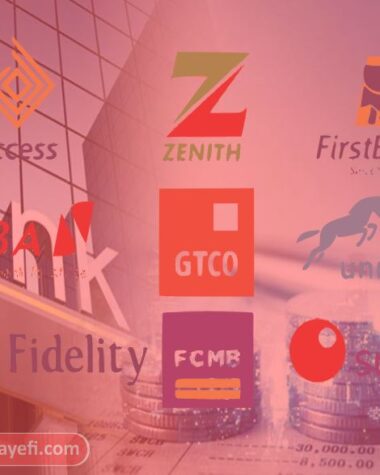Choosing the right software development model can make or break a project’s success. With numerous options available, including the Waterfall model, V-model, Iterative model, Prototyping model, Spiral model, and Agile models, it’s vital to understand their strengths and limitations. Let’s explore the different software development models and find out which one suits your project best.
Waterfall Model
The Waterfall model is a sequential software development model where each stage follows a well-defined set of activities. It is a linear approach that progresses through various phases, including analysis, design, development, testing, deployment, and maintenance. This model is based on the assumption that all requirements are known upfront and can be completely defined at the beginning of the project.
The Waterfall model has a structured and predetermined flow, where each stage relies on the outputs of the previous stage. This approach promotes a systematic and step-by-step development process, allowing for clear project milestones and deliverables.
However, the Waterfall model lacks flexibility and adaptability to changing requirements. It can be expensive and time-consuming since any changes or modifications in the project scope can significantly impact the subsequent stages. This model is best suited for small, one-time projects with clear and fixed requirements, where changes are unlikely to occur throughout the development process.
“The Waterfall model is like a well-orchestrated symphony. Each stage follows a precise sequence, contributing to the overall harmony of the development process. However, it requires careful planning and a thorough understanding of the project requirements to ensure a successful outcome.”
Table: Pros and Cons of the Waterfall Model
| Pros | Cons |
|---|---|
| Structured and well-defined process | Lack of flexibility and adaptability |
| Clear project milestones and deliverables | Expensive and time-consuming |
| Easy to understand and manage | Risk of delivering a product that doesn’t meet user needs |
| Promotes documentation and traceability | No room for changes once a stage is completed |
V-Model
The V-Model is an extension of the Waterfall model that emphasizes early test planning to ensure effective validation and verification throughout the software development process. This model follows a sequential flow similar to the Waterfall model, with corresponding testing activities aligned with each development stage.
The V-Model offers better chances of success by integrating testing from the beginning, which helps identify and address issues early on. It establishes a clear relationship between the different development phases and their corresponding testing activities. This allows for a more structured and systematic approach to quality assurance and ensures that the software being developed meets the specified requirements.
“By incorporating testing activities at each stage, the V-Model helps in ensuring the quality of the software being developed, reducing the risks associated with inadequate testing.”
However, it is important to note that the V-Model is less flexible compared to Agile models, making it less suitable for projects with changing or evolving requirements. Its strict sequential nature may hinder adaptability and responsiveness to evolving business needs.
Validation and Verification in the V-Model
The V-Model puts a significant emphasis on validation and verification throughout the software development life cycle. Validation ensures that the software meets the specified requirements and satisfies the end-users’ needs, while verification confirms that the software has been implemented correctly according to the defined specifications.
Validation activities in the V-Model include:
- User acceptance testing (UAT)
- System testing
- Integration testing
Verification activities in the V-Model include:
- Unit testing
- Module testing
- Component testing
Both validation and verification activities are crucial for identifying defects, inconsistencies, and functionality issues early in the development life cycle, thereby reducing the risk of expensive rework and late-stage failures.
| Validation | Verification |
|---|---|
| User acceptance testing (UAT) | Unit testing |
| System testing | Module testing |
| Integration testing | Component testing |
The V-Model’s focus on validation and verification helps ensure that the software being developed is thoroughly tested and meets both functional and non-functional requirements. However, organizations must carefully consider project requirements and constraints to determine whether the V-Model’s sequential approach aligns with their needs.
Iterative Model
The Iterative model is a software development approach that aims to address the limitations of the Waterfall model by incorporating repeated cycles and incremental development. This model allows for the software to evolve and grow through small changes made in each iteration, enabling continuous improvement.
Unlike the Waterfall model, which follows a sequential process, the Iterative model allows for flexibility and adaptation to changing requirements. Each iteration involves analyzing, designing, developing, testing, and reviewing the software, providing opportunities for feedback and refinement along the way.
By breaking down the development process into smaller iterations, the Iterative model enables developers to identify and rectify issues early on, reducing the risks associated with major changes later in the project. It also allows stakeholders to have visibility and involvement throughout the development process, ensuring that the final product meets their expectations.
However, it is important to note that the Iterative model may pose challenges in terms of frequent changes and uncertain deadlines. Without proper planning and management, there is a risk of scope creep and project delays. Therefore, it is crucial to have a well-defined roadmap and effective communication channels in place to mitigate these risks.
The flexibility and adaptability of the Iterative model make it suitable for projects where requirements are subject to change, such as software development projects in dynamic industries or those with evolving user needs. It promotes collaboration, empowers teams to make incremental progress, and ultimately leads to the development of high-quality software.
Below is a comparison table highlighting the key characteristics of the Iterative model and the Waterfall model:
| Model | Iterative Model | Waterfall Model |
|---|---|---|
| Approach | Incremental and iterative | Sequential |
| Flexibility | High | Low |
| Adaptability to changing requirements | High | Low |
| Risk management | Continuous | Limited |
| Communication and stakeholder involvement | Frequent and ongoing | Less frequent |
| Timeline and deadlines | Flexible | Fixed |
Prototyping Model
The Prototyping model is a software development approach that revolves around creating prototypes to deeply understand customer requirements before proceeding with full-scale development. This model involves developing a small-scale replica of the software program and iteratively refining it based on valuable customer feedback.
The primary aim of the Prototyping model is to minimize the number of iterations required during development and increase customer satisfaction by aligning the final product more closely with their expectations.
By actively involving customers in the prototyping process, we can gain valuable insights and address any potential issues or concerns early on, ultimately resulting in a product that better meets their needs.
However, it is important to note that the Prototyping model has some limitations. One of the drawbacks is the time spent on developing prototypes, which can potentially prolong the overall development cycle. Additionally, once the final prototype is in development, there is limited flexibility for making significant changes.
Advantages of the Prototyping Model:
- Enhanced understanding of customer requirements through iterative development.
- Improved customer satisfaction by actively involving them in the feedback process.
- Reduced development time by identifying and addressing potential issues early on.
Limitations of the Prototyping Model:
- Increased development time due to the creation and refinement of prototypes.
- Limited flexibility once the final prototype is being developed.
| Advantages | Limitations |
|---|---|
| Enhanced understanding of customer requirements | Increased development time |
| Improved customer satisfaction | Limited flexibility during final development |
| Reduced development time by identifying issues early on |
Spiral Model
The Spiral model is a software development model that focuses on risk assessment and management. It combines features of the Waterfall and Prototyping models, allowing for continuous development and risk mitigation throughout the project lifecycle. This model is particularly useful for projects with high levels of uncertainty and a need for regular risk analysis and adaptation.
The Spiral model follows four distinct phases:
- Planning Phase: In this phase, project objectives and requirements are defined, along with initial risk assessment. The project scope, deliverables, and schedules are also established.
- Risk Analysis Phase: During this phase, potential risks and their impacts are identified and analyzed. Strategies for risk mitigation and contingency plans are developed, taking into consideration the project’s specific requirements and constraints.
- Engineering Phase: This phase involves the actual development of the software based on the requirements and risk analysis. Prototypes may be built and tested to ensure that the evolving software meets the intended functionality and performance criteria.
- Evaluation Phase: The final phase of the Spiral model focuses on evaluating the project’s progress and outcomes. This includes reviewing the software’s functionality, performance, and adherence to project objectives. User feedback is gathered and incorporated to improve the software’s quality.
While the Spiral model offers advantages such as flexibility and risk management, it has some drawbacks. Extended timeframes and higher costs can result from the iterative nature of the model. Additionally, the highly customized approach may make reusing work from previous projects challenging. Nonetheless, for complex projects with evolving requirements and significant risks, the Spiral model can be an effective approach.
Benefits of the Spiral Model:
- Effective risk management through continuous assessment
- Flexibility in accommodating changing requirements
- Improved stakeholder involvement and collaboration
- Incremental development and delivery of working software
Drawbacks of the Spiral Model:
- Potential for extended timeframes and increased costs
- Difficulty in reusing work from previous projects
- Not suitable for small, straightforward projects with fixed requirements
The Spiral model provides a structured approach to software development, enabling project teams to manage risks effectively while adapting to evolving requirements. However, it may not be the most suitable model for every project due to its customized nature and associated time and cost implications.
| Advantages | Disadvantages |
|---|---|
| Effective risk management | Potential for extended timeframes and higher costs |
| Flexibility in accommodating changing requirements | Difficulty in reusing work from previous projects |
| Improved stakeholder involvement and collaboration | Not suitable for small, straightforward projects with fixed requirements |
| Incremental development and delivery of working software |
Agile Models
Agile models, such as Scrum, Extreme Programming (XP), and Kanban, are revolutionizing the software development industry. These models are built on the principles of collaboration, communication, and continuous change, enabling teams to deliver high-quality software with greater efficiency.
One of the most popular Agile models is Scrum. It follows an iterative approach, breaking down the project into manageable chunks called sprints. Each sprint focuses on delivering a specific set of features within a fixed timeframe. Scrum promotes transparency, flexibility, and adaptability, allowing teams to respond quickly to changing requirements and prioritize customer feedback.
Extreme Programming (XP) is another Agile model that emphasizes rigorous testing and continuous integration. XP is known for its focus on quality and customer satisfaction. It promotes practices such as test-driven development, pair programming, and frequent releases. By providing immediate and continuous feedback, XP helps teams build robust software that meets customer expectations.
Kanban is a visual method that aims to improve workflow and reduce waste. It focuses on visualizing project activities using a Kanban board, where tasks are represented as cards and move across different stages. Kanban promotes efficiency, collaboration, and continuous improvement by enabling teams to identify bottlenecks, optimize their processes, and enhance productivity.
Agile models, such as Scrum, Extreme Programming (XP), and Kanban, are transforming the software development landscape, enabling teams to deliver high-quality software with customer-centricity and adaptability at their core.
Comparison of Agile Models
| Agile Model | Key Features | Benefits |
|---|---|---|
| Scrum | Iterations known as sprints Customer-centric approach Transparency and adaptability |
– Quick response to changing requirements – Early customer feedback – High level of collaboration – Improved team productivity |
| Extreme Programming (XP) | Test-driven development Continuous integration Pair programming |
– Enhanced software quality – Quick and continuous feedback – Increased customer satisfaction – Efficient team collaboration |
| Kanban | Visualize project activities Optimize workflow Continuous improvement |
– Enhanced productivity – Efficient resource allocation – Reduced waste and bottlenecks – Improved project visibility |
Agile models, such as Scrum, Extreme Programming (XP), and Kanban, offer unique strengths and cater to different project requirements. It is essential for organizations to evaluate their specific needs and select the most suitable Agile model to drive successful software development.
Conclusion
Software development models are instrumental in determining the success of a project. Several factors such as project requirements, timelines, and flexibility should be considered when choosing the right model. The Waterfall, V-model, Iterative, Prototyping, Spiral, and Agile models provide different approaches to software development.
While the Waterfall and V-model have their limitations in terms of flexibility, Agile models offer greater adaptability and collaboration. Agile models, such as Scrum, Extreme Programming (XP), and Kanban, emphasize iterative development, early customer feedback, and continuous improvement. These models, widely embraced in the industry, enable efficient and effective software delivery.
It is crucial to assess the specific needs of the project and select the most suitable software development model. By choosing the right model, teams can enhance productivity, streamline workflows, and achieve successful outcomes. Whether it’s a small scale project with fixed requirements or a complex endeavor with evolving needs, the appropriate software development model can make a significant difference.
FAQ
What is the software development life cycle (SDLC)?
The software development life cycle (SDLC) is the process of planning, designing, developing, testing, and deploying software.
What are some popular software development models?
Some popular software development models include the Waterfall model, V-model, Iterative model, Prototyping model, Spiral model, and Agile models.
What is the Waterfall model?
The Waterfall model is a sequential software development model that includes stages such as analysis, design, development, testing, deployment, and maintenance.
What is the V-model?
The V-model is an extension of the Waterfall model that emphasizes early test planning and includes corresponding testing activities for each development stage.
What is the Iterative model?
The Iterative model incorporates repeated cycles and incremental development to address the shortcomings of the Waterfall model.
What is the Prototyping model?
The Prototyping model focuses on creating prototypes to better understand customer requirements before full development.
What is the Spiral model?
The Spiral model focuses on risk assessment and includes four phases: planning, risk analysis, engineering, and evaluation.
What are Agile models?
Agile models, such as Scrum, Extreme Programming (XP), and Kanban, are based on collaboration, communication, and constant change.
How do I choose the right software development model for my project?
Choosing the right software development model depends on various factors such as project requirements, timelines, and flexibility.
What are the advantages of Agile models?
Agile models provide greater flexibility, collaboration, early customer feedback, and continuous improvement.
How can software development models contribute to project success?
Software development models play a crucial role in project success by providing structured approaches to software development and ensuring that projects are completed effectively and efficiently.










